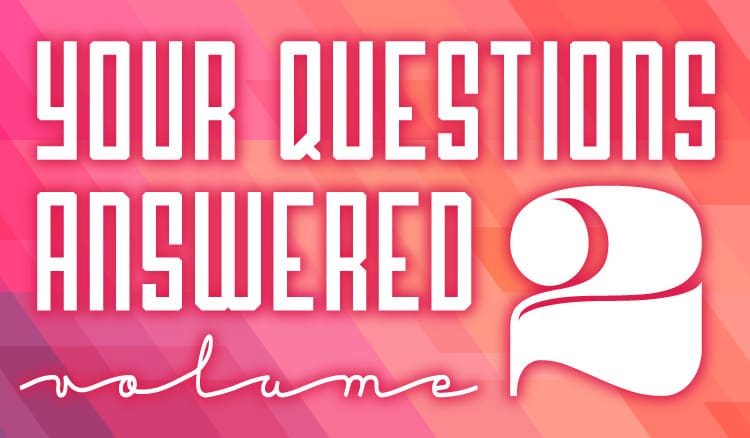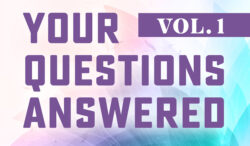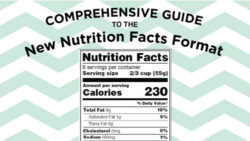Our first Q&A blog post was so popular that I’m excited to publish our second Q&A of this series. Food packaging and compliance can be so complicated, and the FDA code so technical and lengthy, that many are left with questions they can’t find a clear answer to. Having been specializing in gourmet food packaging and branding design for 17 years, I’m happy to make it easy for you by answering your questions!
Q. Could we include a ‘did you know’ section on a package with the purported health benefits of a couple ingredients like cinnamon and cayenne. Not claiming our products provide those benefits but the products contains cinnamon & cayenne and it would be, for example, “Did you know…cinnamon is a high source of antioxidants and contains anti-inflammatory properties…” etc.?
A. No, you can’t make those kinds of claims on the package, even if you’re just talking about the ingredients themselves and not the product. For food labeling, any nutrient content claims must be based on the actual nutrition of the product. So for example if you want to say the product has antioxidants you must make the claim appropriately according to regulation and cite the ingredients that are the good or high source – e.g.,” a good source of the antioxidants Vitamins C & E.”
Regarding “anti-inflammatory”: The FDA has issued warning letters to manufacturers of food products with this claim that it is considered a disease claim and the product is misbranded and should be labeled as a drug.
Q. If 99% of ingredients in a product are organic (but the product is not certified organic because the facility it’s manufactured in isn’t certified) then can you say “Made With (or made from) Organic Ingredients?”
A: If the product isn’t certified organic, then the only place you can say Organic on the label is in the ingredient listing. When this is the case, it’s best to make the ingredients bigger, bold and mixed case to bring more attention to them and for easier legibility compared to all caps. If you’re doing mixed case though then the ingredient letters need to be 1/16” tall based on the lowercase letter o. And any required allergen warnings need to be in comparable size and treatment as the ingredients.
Q: We import a food product for imported food service, not retail. Recently, during an FDA inspection, the inspector pointed out that the words on our packaging should be in English. Right now they are only partially in English. The nutritional information label is already compliant to the new regulations. Where can I find some specific info regarding this?
A: Food service products need to adhere to the same requirements as retail packages.
All required information on the package needs to be in English. If there is any foreign language on the package, then all the required information needs to be in both languages.
Q. On food ingredient statements, is there supposed to be a period at the end of the statement?
A. The period at the end of the ingredient list is not required. The FDA examples do not use a period, however many brands opt to put a period at the end to give finality to the list.
Q: Is a calorie callout that is per serving (not “Facts Up Front”), for example “150 calories per bar” a nutrient content claim? If the product exceed the disclosure levels would you make the appropriate disclosures in such a case?
A: If it is a “Facts Up Front” callout, or a callout that reiterates exactly what information is in the nutrition panel, with no categorizing information, then it is not a claim and does not require a disclosure. Anything else requires a disclosure if applicable. Last I checked, the Facts Up Front program requires the disclosure level anyway even though it is technically not required by FDA in such cases.
Q. How do I incorporate a barcode into my label? Should we add it to the label design or just print separate label barcodes? If adding to label design what are the parameters?
A. It’s easiest (and less labor in applying labels) to print it on the label.
There are free barcode creator websites where you input the UPC # and it creates the barcode, however you need the actual UPC # first. It’s best to setup an account with GS1 and purchase the # of UPC #s you’ll need under this brand name including for future use.
You can also get one-off barcodes from a place like EZ UPC – however these barcodes do not include a “manufacturer code” and some major retail grocery chains do not accept products with these barcodes. Therefore I do not recommend this option..
Place the barcode at 100% scale if possible, otherwise reducing the overall size by up to 80% will generally scan fine. Any smaller than that and it may not scan. Packaging printers can often confirm the UPC is scannable. It can be upright or sideways although sometimes a package printer will require it to be in a certain direction. You may reduce the height of the bars to shorten the barcode for space, but sure not to otherwise modify the bars themselves at all. The barcode artwork should be 100% black (not a rich black) and on a white background for maximum scannability.
Q. Is it OK to have all type in the nutrition label (vertical format) to be a minimum of 6 pt (.0625″ height), when the PDP is < 12 sq in?
A. The font sizes need to follow the sizes specified for the linear format assuming that’s the format you’d be using. Here is a link to the FDA’s minimum font sizes for each nutrition label format.
For packages with less than 12 sq in of labeling area, you can include a phone number or address to access nutrition information. However if you are including a nutrition panel it needs to meet all the requirements.
You can use a condensed font as long as the height of the letters is not more than 3x the width of the letters. You can often reduce a condensed sans-serif font’s width by up to 70% until the height becomes greater than 3x the width but you do need to measure this if doing so to ensure it still meets the minimum requirements.
Q: I have had a number of clients come to me recently looking to update their labels to the new standard but I have yet to find a good way to handle this work effectively and affordably without starting the label designs from scratch. If you wouldn’t mind sharing is there a specific tool you use to create your labels?
A: For updating the nutrition facts labels, I have my own templates in illustrator that I have developed that are compliant with the FDA standards. For the most part it’s simply a matter of replacing the nutrition facts portion of the artwork in the original illustrator artwork file. However sometimes it does take finessing to get the nutrition label to fit.
To develop my templates, I started by opening the pdf of the new nutrition facts format (from the FDA’s website) in illustrator and making my own over that. Since space is often an issue, I condensed mine using condensed fonts and condensing some of the horizontal space in the tabular formats.
Another route if space is not an issue is to use recipal.com which is a DIY way to get nutrition labels and they supply an image you can pop into the layout as is.
In any event, you would need the client to supply the new nutrition values for you. There is information needed on the new labels that are not on the old labels and some information RACC has changed for certain categories. They can do this using recipal.com or if they have a nutrition analyst they use, they can get the new analysis that way.





We are developing a vending package containing a bagel and a foil package of cream cheese. The cream cheese package has full nutrition info printed on it. On our main label for the vending package, do we have to provide combined nutrition information for both the bagel and the separate cream cheese foil pack, or just for the bagel, or for both?
Hi Mark,
Yes, the main label needs to have nutrition information for both items on it.
You have the option of listing the nutrition information for both items separately or as a composite. It is up to you.
Here is the source for that if you’re interested: https://www.accessdata.fda.gov/scripts/cdrh/cfdocs/cfcfr/CFRSearch.cfm?fr=101.9
Search for “101.9(h)(1)” on that page and it will bring you to the specific paragraph that addresses this.
Best,
Jenn